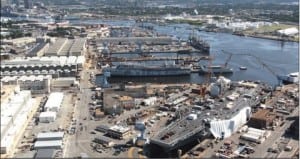
The Navy’s top official said the service would welcome the chance to renew the it’s four public shipyards faster than planned under a current 20-year plan if given more funding. “I believe that the Shipyard Infrastructure Optimization Plan (SIOP) - right now it’s a 20-year plan that’s upward of $20 billion - is something that we could look at accelerating if additional funds were available,” Acting Secretary of the Navy Thomas Harker said during testimony before the House Appropriations Committee’s…

 By
By 











